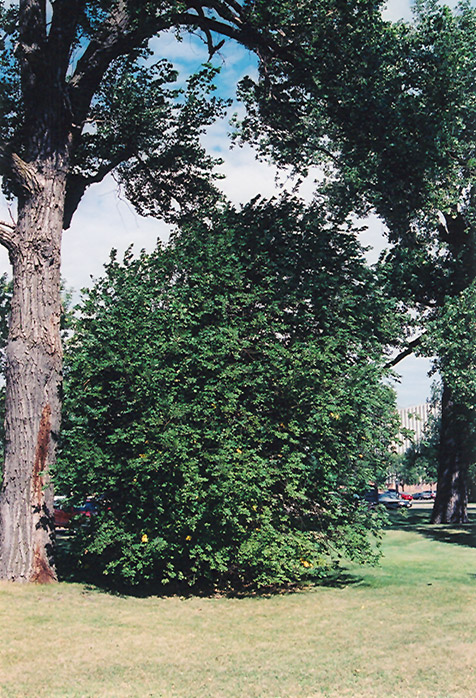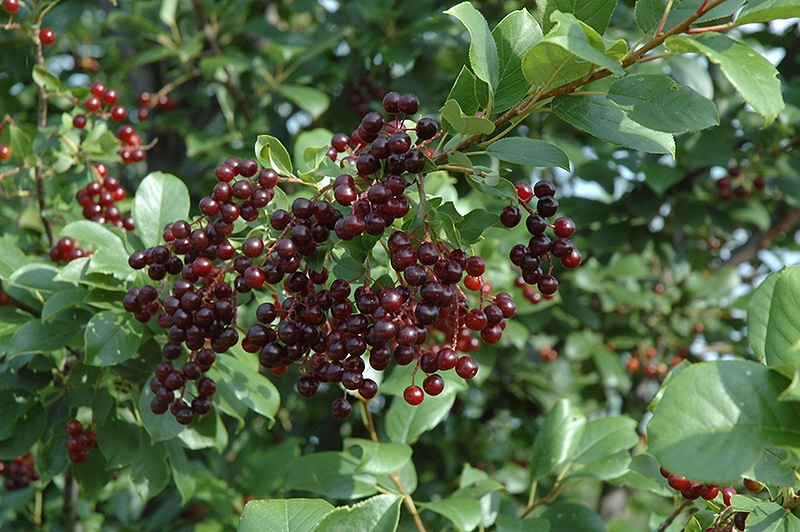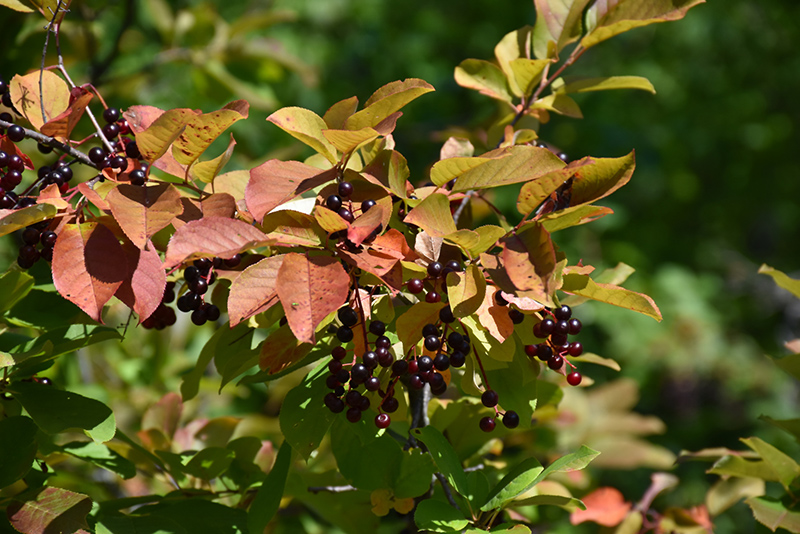PLANT FINDER
Height: 25 feet
Spread: 20 feet
Sunlight:
![]()
Hardiness Zone: 2a
Other Names: Common Chokecherry
Description:
A small native tree with very attractive racemes of white flowers in spring followed by small, astringent black cherries that make a delicious preserve or syrup, good fall color; tends to sucker, may be susceptible to black knot
Native Plant Options
Native plants are gaining back their popularity with home gardeners. Be apart of this growing community by purchasing your own native varieties specific to Northeast Wisconsin/Midwest. Click "Learn more about this promotion" to view a plant list specifically curated by one of our top native plant growers, Midwest Groundcovers.
Learn more about this promotion!
Ornamental Features
Chokecherry features showy chains of fragrant white flowers hanging below the branches in mid spring. It has dark green deciduous foliage. The oval leaves turn yellow in fall. The fruits are showy deep purple drupes with black overtones, which are displayed in mid summer.
This plant is primarily grown as an ornamental, but it's also valued for its edible qualities. The small round sour fruit is most often used in the following ways:
- Preserves
- Wine-Making
Landscape Attributes
Chokecherry is a deciduous tree with a more or less rounded form. Its average texture blends into the landscape, but can be balanced by one or two finer or coarser trees or shrubs for an effective composition.
This is a high maintenance tree that will require regular care and upkeep, and is best pruned in late winter once the threat of extreme cold has passed. It is a good choice for attracting birds to your yard. Gardeners should be aware of the following characteristic(s) that may warrant special consideration;
- Suckering
- Disease
Chokecherry is recommended for the following landscape applications;
- Accent
- Shade
- Naturalizing And Woodland Gardens
- Orchard/Edible Landscaping
Planting & Growing
Chokecherry will grow to be about 25 feet tall at maturity, with a spread of 20 feet. It has a low canopy with a typical clearance of 4 feet from the ground, and is suitable for planting under power lines. It grows at a medium rate, and under ideal conditions can be expected to live for 40 years or more. This is a self-pollinating variety, so it doesn't require a second plant nearby to set fruit.
This tree should only be grown in full sunlight. It does best in average to evenly moist conditions, but will not tolerate standing water. It is not particular as to soil type or pH. It is highly tolerant of urban pollution and will even thrive in inner city environments. This species is native to parts of North America.



